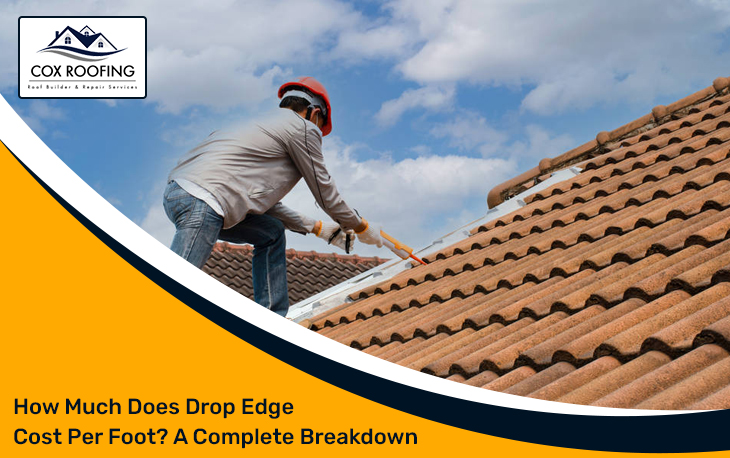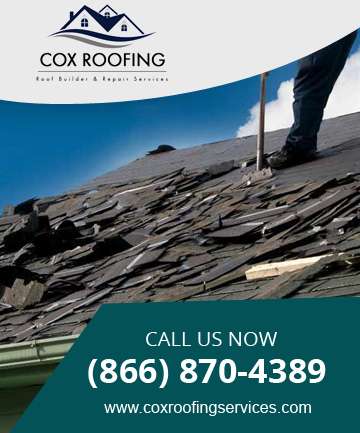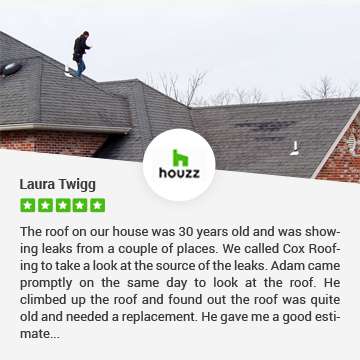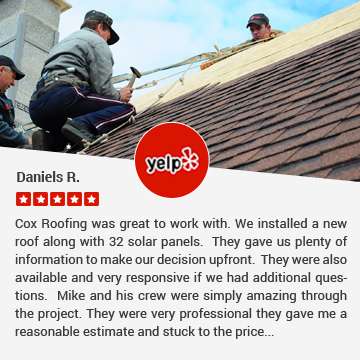How Much Does Drop Edge Cost Per Foot? A Complete Breakdown
Drop edge is a special finishing technique used in construction, especially for roofing. It creates a clean, finished edge that protects the roof and looks nice. This technique is important because it prevents water damage and makes the roof last longer. Several things affect how much drop edge costs, like the materials used and who installs it. This information will help you understand the costs involved.

Understanding Drop Edge
Drop edge, also known as drip edge, is a metal flashing installed at the edges of a roof. Its main job is to direct water away from the fascia and siding. This prevents water damage to these parts of the house. Drop edge comes in different materials, like aluminum, steel, and copper. People commonly use it on shingle roofs, metal roofs, and even some flat roofs.
Firstly, drop edge protects the roof from water damage. Then, it makes the roof look neat and finished. After that, it helps prevent ice dams in colder climates. Finally, it can also deter pests from entering the roof structure. Therefore, it is a very important part of a roofing system.
Moreover, different roofing materials offer different benefits. For instance, aluminum is lightweight and resists rust. Steel is strong and durable. Copper looks beautiful and lasts a very long time. Consequently, choosing the right material is important for your project.
Cost Factors
Several factors influence the cost of drop edge. Firstly, the material type is a big factor. Aluminum is usually the cheapest, followed by steel, and then copper. Secondly, the thickness of the material, called gauge, matters. Thicker material costs more.
Additionally, different finishes affect the price. For example, galvanized steel is more expensive than raw steel. Painted finishes also add to the cost. Furthermore, where you live and the current market prices can change the cost. Finally, how much drop edge you need for your project also affects the total cost.
For instance, if you need a lot of drop edge, you might get a better price per foot. Similarly, if you choose a premium material like copper, you will pay more than for aluminum. Therefore, it’s important to consider all these factors.
Average Cost Breakdown
The cost of drop edge can be broken down into material costs and labor costs. Material costs vary depending on the type and quality. Economy options, like basic aluminum, might cost $1-2 per foot. Mid-range options, such as painted steel, could be $2-4 per foot. Premium materials, like copper, can be $4 or more per foot.
Furthermore, labor costs for installation depend on the complexity of the roof and the local labor rates. These costs can vary significantly. Additionally, you might need to buy extra supplies, like nails or sealant. These also add to the total cost.
For example, a simple roof might have lower labor costs than a complex roof with many angles. Also, using higher quality sealants may increase material costs. Thus, considering all these factors gives a more accurate cost estimate.
Cost Comparison by Material Type
Aluminum drop edge is lightweight and resists corrosion. It is usually the most affordable option. Steel drop edge is stronger than aluminum but can rust if not properly protected. It is a mid-range cost option. Copper drop edge is the most expensive but is very durable and looks beautiful.
Firstly, aluminum is best for projects where cost is a major concern. Then, steel is a good choice for areas with high winds or heavy snow. After that, copper is ideal for high-end projects where aesthetics are important. Finally, each material has its own advantages and disadvantages. Therefore, choosing the right material is crucial.
Moreover, aluminum is easy to work with and install. Steel requires more careful handling. Copper needs specialized installation techniques. Consequently, installation costs can also vary depending on the material.
Ways to Save Money
You can save money on drop edge in several ways. Firstly, buying in bulk can often get you a lower price per foot. Secondly, buying during off-season times might offer discounts. Thirdly, comparing prices from different local suppliers can help you find the best deal.
Additionally, if you are handy, you might consider installing the drop edge yourself. However, this requires careful work and knowledge of roofing techniques. Therefore, if you are not experienced, it is best to hire a professional.
For instance, some suppliers offer discounts to contractors or for large orders. Similarly, winter might be a good time to buy roofing materials in some areas. Thus, careful planning can save you money.
Installation Considerations
Installing drop edge correctly is important for it to work properly. This can affect the total project cost. Professional installation ensures the job is done right. However, it adds to the labor costs. DIY installation can save money but requires skill and care.
Firstly, incorrect installation can lead to leaks and other problems. Then, professional roof installers have the right tools and experience. After that, DIY installation can be challenging for complex roofs. Finally, common mistakes include incorrect overlap and improper fastening. Therefore, consider your skills and the complexity of the roof.
Moreover, if you choose DIY, make sure to follow the manufacturer’s instructions carefully. Also, wear proper safety gear. Consequently, taking the proper precautions is essential.

Maintenance and Longevity
The lifespan of drop edge depends on the material. Aluminum can last for many years with minimal maintenance. Steel, especially galvanized steel, can also last a long time if properly maintained. Copper is the most durable and can last for decades.
Firstly, cleaning the drop edge regularly can help prevent buildup of debris. Then, checking for damage, like dents or corrosion, is important. After that, repairing any damage promptly can prevent bigger problems. Finally, knowing when to replace the drop edge is important for maintaining your roof. Therefore, regular maintenance and inspection are key.
Moreover, copper develops a patina over time, which protects it from further corrosion. However, this changes its appearance. Consequently, you may need to clean it to maintain its original shine.



